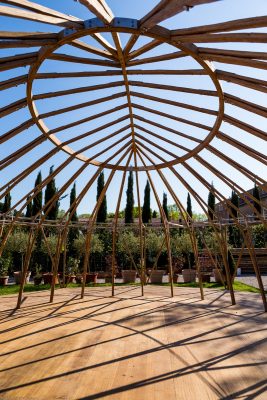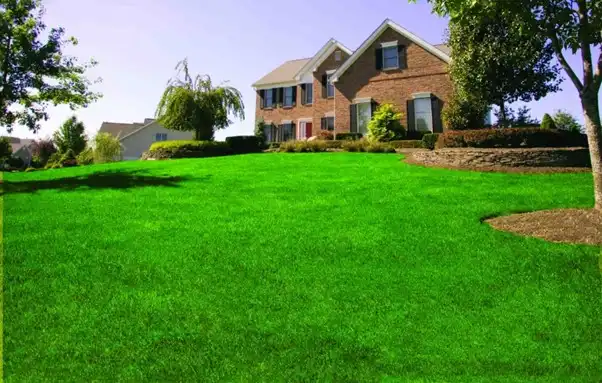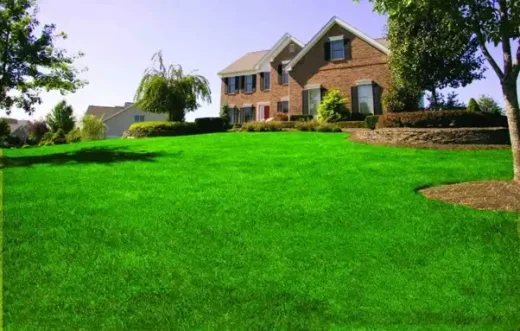Exploring the environmental impact of artificial grass lawns, Property outdoors expansion
Exploring the Environmental Impact of Artificial Grass Lawns
6 November 2024
Most of us have wrestled with maintaining a perfect lawn. But the upkeep of a natural lawn can be overwhelming.
Artificial grass lawns promise a low-maintenance, evergreen lawn. However, the environmental impact of artificial grass is complex. It involves trade-offs affecting our planet.
The Allure of Artificial Grass
Artificial grass offers a pristine, year-round surface. It eliminates watering, mowing, pesticides, and fertilizers, thus creating lower water usage overall. This reduces chemical use, minimizing environmental impact.
These features are attractive, especially in drought-prone areas with low annual rainfall amounts. For these areas, the ability for the artificial lawn to reduce storm water runoff can prove invaluable, helping surface water remain at healthy levels for local aquatic life and nearby water systems.
Water Conservation and Reduced Chemical Use
Traditional lawns in the UK can use up to 17,000 liters of water yearly per household. Artificial grass eliminates this demand entirely.
This substantial water conservation is valuable, especially with climate change and increasingly less reliable weather conditions in drier regions.
Artificial turf eliminates pesticides and fertilizers, reducing the amount of poly-fluoroalkyl substances and hazardous chemicals, often commonly used on natural grass lawns. This lessens chemical introduction into the environment, positively impacting human health.
The Environmental Impact of Artificial Grass: Manufacturing and Materials
Artificial grass has drawbacks. Production, mainly from plastics like polyethylene, requires substantial energy from fossil fuels, adding to greenhouse gas emissions.
Manufacturing also generates harmful organic compounds and adds to environmental concerns.
The Carbon Footprint of Production
Creating synthetic turf is energy-intensive. Producing enough for an average garden can emit over 1,000 kg of CO2, equivalent to driving a car roughly 2,480 miles.
This reveals a significant environmental impact from production. The carbon footprint from fossil fuels offsets some environmental benefits.
The Lifespan and Disposal Dilemma: Long-Term Environmental Impact of Artificial Grass
Artificial grass lasts 10-20 years. Disposal presents a challenge. Recycling artificial grass is difficult due to its composite materials.
Discarded artificial grass often ends up in landfills, becoming plastic trash and adding to long-term environmental problems.
The Recycling Challenge and Landfill Waste
Despite recycling initiatives, like those from TenCate Grass, large-scale recycling is difficult.
The composite structure makes component separation hard. Most artificial turf goes to landfills, worsening the plastic waste problem and requiring more recycling facilities. This situation underlines the urgency to address the product’s long-term environmental impacts.
The Heat Island Effect
Artificial grass looks cool, but it contributes to the urban heat island effect. Unlike natural grass, which cools through evapotranspiration and absorbs CO2, artificial turf traps heat, causing higher surface temperatures, also contributing to elevated high surface temperatures.
Studies show artificial grass can reach 100°C (212°F). This poses a burn risk and raises urban temperatures.
Considering Alternatives: Balancing Needs and Impact
Given the complex environmental impact of artificial grass, exploring alternatives is important.
Options like native plants, clover lawns, and xeriscaping offer ecological benefits, reduce maintenance, and create a more eco-friendly option for consumers and municipalities.
Exploring Eco-Friendly Landscaping Options
Native plants thrive in local climates and need less water.
Clover creates lush, green cover while being naturally nitrogen-fixing. Xeriscaping uses drought-tolerant plants for low-water landscapes.
These options minimize environmental impact. Choosing locally sourced materials, such as rocks and stones, further reduces the impact compared to synthetic surfaces, providing eco-conscious alternatives and making choosing artificial grass less necessary.
Frequently Asked Questions (FAQs)
What is the environmental impact of artificial grass?
The impact is complex. Artificial grass conserves water and reduces chemical use, lowering the risk to public health. However, manufacturing relies on fossil fuels, contributing to plastic trash and carbon emissions.
Disposal poses challenges, and artificial turf exacerbates the urban heat island effect, contributing to increasing water needs of thirsty vegetation. There is also the issue of increased microplastic pollution stemming from artificial grass fields, adding further potential for human health and public health impacts.
What are the eco-friendly alternatives to artificial grass?
Alternatives include native grasses, clover lawns, and xeriscaping. These options reduce environmental impact while offering low-maintenance and aesthetic appeal for property owners who prefer natural materials.
Proper hazard assessment for each of these options remains essential before a given property makes its choice regarding which surface to use and how it impacts public health and nearby surface water resources. Choosing any of these artificial grass alternatives will have positive effects in many ways.
Weighing water conservation against manufacturing, disposal, and heat is crucial. While synthetic turf is convenient, long-term environmental concerns make sustainable landscaping appealing.
Choosing lawn materials requires considering environmental effects. Your ideal lawn reflects your priorities. Whether convenience outweighs long-term environmental implications is your decision.
Comments on this guide to Exploring the Environmental Impact of Artificial Grass Lawns article are welcome.
Gardens
Garden Posts
5 benefits of owning a garden room
Garden Rooms: Property Expert Guide
How to neatly organize your home garden
Building Design
Residential Architecture Articles

photo courtesy of architects office
The Majlis at San Giorgio Maggiore
Comments / photos for the Exploring the Environmental Impact of Artificial Grass Lawns page welcome






